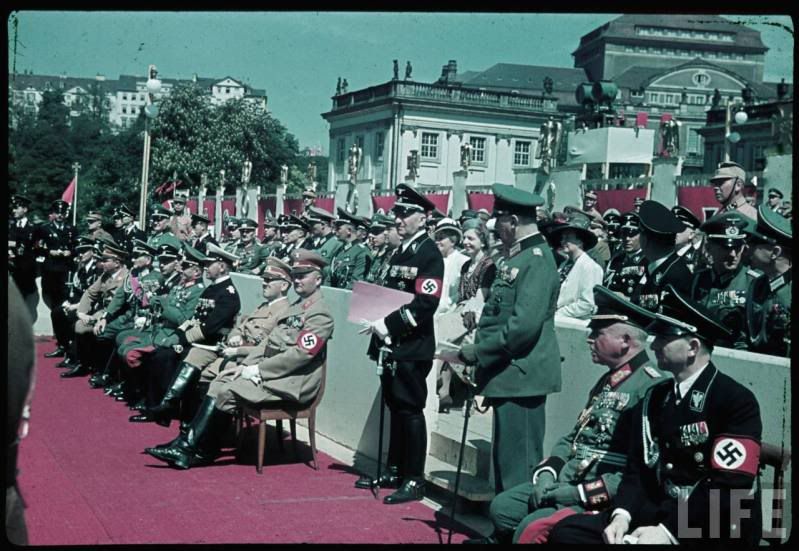Welcome back Frederick.
Interesting read so far however here's what I see as the 'wall' facing the disbelievers;
1. First off you have to try to convince the believers that what they are seeing is not authentic.
You have to get us to believe that these crossguards were somehow switched postwar with epack SS crossguards.
The owner I got the Hansen 'Battle of Bulge' dagger got it right off the living veteran. Then you would have to convince me that the Kratochwill dagger was even disassembled ( I see no evidence of it).
Then you have to convince Witty that these things ('1' stamped SA crossguards) really didn't happen as he has stated they did.
2. Then you need to convince the majority that when Hitler came to power that the Red agitations had somehow stopped and they all became law abiding 'good citizens' of the new 3rd Reich, and by 1934 there were no more subversive activities by RF, SD and the like.
Unfortunatley the people who were doing the fighting against the Nazi regime have already disagreed with you, as would most certainly Duke Carl Eduard with the placement of the 1934 date on his presentation daggers.
http://books.google.com/books?id=5kk...ed=0CEAQ6AEwBQ
OK - later switched crossguards with SS. No Proof.
OK - 1934 'Revolution' date not consistant with historic facts. -Soo Sorry G.I.-but it is historically accurate.
Now what is left? Ah Yes....that tell tale 'squiggle on the wiggle' in the Sutterlin script perhaps?
I, along with 97% of our colleages, await the proof. As they used to say; 'Where's the Beef ?'
Time to flop it on the table to see that Perry Mason 'Ah-Haa' moment.
I know...it's 'right-around-the-corner'.
Respectfully,
Serge
Interesting read so far however here's what I see as the 'wall' facing the disbelievers;
1. First off you have to try to convince the believers that what they are seeing is not authentic.
You have to get us to believe that these crossguards were somehow switched postwar with epack SS crossguards.
The owner I got the Hansen 'Battle of Bulge' dagger got it right off the living veteran. Then you would have to convince me that the Kratochwill dagger was even disassembled ( I see no evidence of it).
Then you have to convince Witty that these things ('1' stamped SA crossguards) really didn't happen as he has stated they did.
2. Then you need to convince the majority that when Hitler came to power that the Red agitations had somehow stopped and they all became law abiding 'good citizens' of the new 3rd Reich, and by 1934 there were no more subversive activities by RF, SD and the like.
Unfortunatley the people who were doing the fighting against the Nazi regime have already disagreed with you, as would most certainly Duke Carl Eduard with the placement of the 1934 date on his presentation daggers.
http://books.google.com/books?id=5kk...ed=0CEAQ6AEwBQ
OK - later switched crossguards with SS. No Proof.
OK - 1934 'Revolution' date not consistant with historic facts. -Soo Sorry G.I.-but it is historically accurate.

Now what is left? Ah Yes....that tell tale 'squiggle on the wiggle' in the Sutterlin script perhaps?

I, along with 97% of our colleages, await the proof. As they used to say; 'Where's the Beef ?'

Time to flop it on the table to see that Perry Mason 'Ah-Haa' moment.

I know...it's 'right-around-the-corner'.
Respectfully,
Serge


 </O
</O

Comment